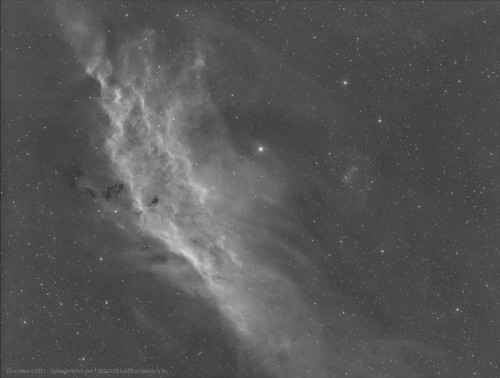
Here’s my first pass of 100 x 240-second sub-exposures in hydrogen-alpha with the Antlia 3nm Ha filter, ZWO ASI1600MM-Pro monochrome camera, and William Optics SpaceCat 51 Refractor (250mm FL @ f/4.9). NGC 1499, the California Nebula, is a large HII region and star-forming cloud in the Constellation Perseus. Its 100 lightyear length is roughly shaped like the State of California—I mean, you can see the San Joaquin Valley, the Sierras and where the land angles in for southern California and the L.A. Basin. So, the name fits the shape. NGC 1499 is east of the Perseus Molecular Cloud, a large star-forming region surrounding the star clusters, IC 348 and NGC 1333, but also includes a bunch of hot O-type stars on their own. The HI supershell in Perseus, a broader backdrop of atomic hydrogen and helium, encompasses the molecular cloud as well as the California Nebula. Almost every nebula I have ever imaged is within our galaxy, the Milky Way, but what’s interesting with NGC 1499 is that our solar system and the California Nebula are both in the Orion Arm of the Milky Way, about 1200 lightyears apart. It’s just up the galactic street from us. We’re practically neighbors!
Published on October 12, 2021 15:16
